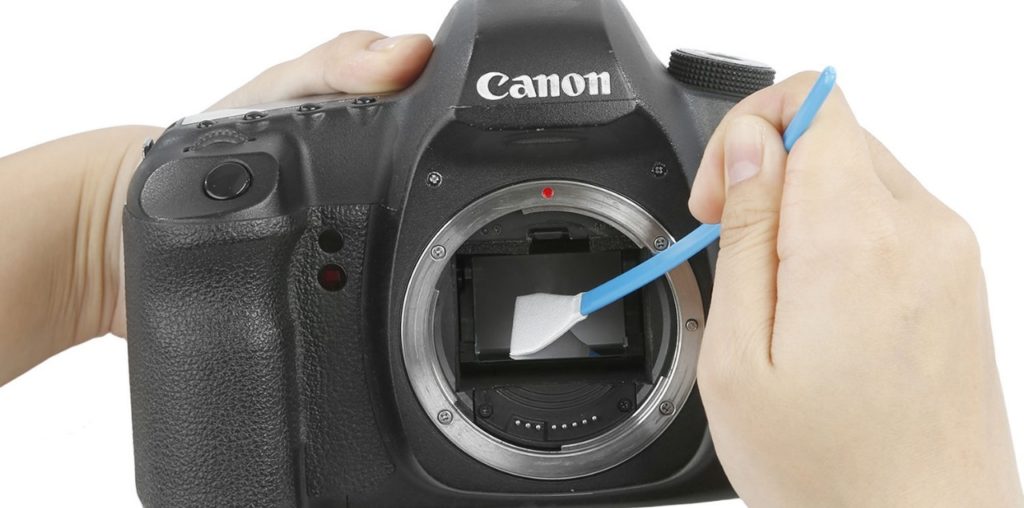Product images courtesy of B&H Photo and Video
Your photography equipment is expensive and should be treated with utmost care. This tutorial provides essential tips for maintaining your sensor and lenses, ensuring your gear remains in top condition for capturing those flawless shots.
Looking after your Lenses
The quality of your images hinges as much on your lens as on your camera. Here are ways to maintain your lenses:
Lens Caps
Always use lens caps when not shooting to protect your lenses from scratches and dust.
UV Filters
UV filters serve a dual purpose. They filter out UV light, enhancing photo quality in bright sunlight, and protect the lens from damage. Opt for high-quality filters to avoid issues like flare and ghosting. A good filter can save your lens from scratches or cracks in case of accidents.

Lens Hoods
The main purpose of a lens hood is minimizing lens flare and enhance photo contrast. It also adds a layer of protection against impacts.
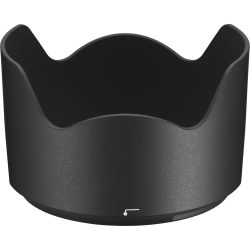
Lens Cleaning
Invest in a proper lens cleaning kit, including a lens pen, a dust blower, a microfiber cloth, and sometimes alcohol swaps.
Start in a well-lit area to spot dust and smudges on your lens. Use the blower or a can of compressed air to blow dust and sand off the front element. This removes particles that could act like sandpaper when you wipe the lens with a microfiber cloth. Blow at a shallow angle to ensure particles blow away from the lens, preventing them from being driven further down. When using a can of compressed air, point it away from the lens first in case of any liquid release. Then direct the air where needed, keeping the can upright to avoid fluid discharge.
Next, use a microfiber cloth to gently wipe the lens clean. Start from the middle, moving in concentric circles toward the edges. For fingerprints or stubborn dirt, lightly moisten the cloth with a lens cleaner solution or alcohol swabs from a pharmacy. Be cautious, as the lens surface has thin layers of coating to enhance light transmission and reduce aberrations and flare. As mentioned earlier, a UV filter can protect your lens by allowing you to clean the filter instead of the front element. After cleaning, inspect the rear lens element and repeat if necessary. Don’t forget to clean your lens cap to prevent dust transfer.
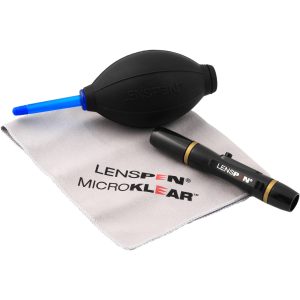
Sensor Maintenance: The Key to Spotless Images
Avoiding Dust and Grime
Dust specks, and sometimes grime, makes it onto your camera sensor when you swap lenses out in the open. Your sensor is especially susceptible to pick up dirt when shooting in windy and dusty environments. These dust specks will often show up in your pictures, which means you will have to painstakingly clone them out in post processing. This can be very time-consuming, and you should take special care to prevent dust and dirt making it into your camera.
Here are a few basic tips to help you keep the sensor dust free:
- Do not take off your lens every time you put the camera away. Rather leave your favourite lens on the camera and only take it off, if you’re swapping it with another lens.
- When swapping lenses, first turn off the camera. This reduces the static charge on the sensor, which can attract dust.
- Swap out lenses inside the camera bag and remember to vacuum the camera bag regularly.
- If you’re out shooting in dusty, or windy conditions, make it back to an enclosed area, such as your vehicle, before swapping lenses.
Professional Cleaning
Most modern cameras are able to clean the sensor by using built-in ultrasonic vibration, which shakes the sensor to knock off dust. Typically, the camera will “self-vibrate” every time you switch your camera on, and off. This may help if you have picked up a little bit of dust, but it is unfortunately not thorough enough to remove grime, particles, or excess dust. If you cannot get rid of dust through using the automatic sensor cleaning method, we recommend that you take your camera into your camera brand’s local service centre. Sometimes, there might be so much dust floating inside the camera, that it will be best for them to dismantle all the parts and clean it properly. In such cases, you will have to leave your camera body at the service centre for a few days. Most of the time, however, your camera will simply need a blow-out, which means the technician can clean it while you wait.
Below are the telephone numbers and addresses of service centres of popular brands supported in South Africa:
- Canon Southdowns Office Park, Corner of Karee & John Vorster Drive Southdowns, Centurion, 0062. 012 675 490
- Fujifilm SA: Building 18, The Woodlands Office Park, 140 Western Service Road, Woodmead 2191. 011 430 5400
- Nikon SA: Premium House, Grey Owl Shopping Center, Erasmus Drive, Louwlardia, 0157. (087) 285-3300
Self-Cleaning (Caution Advised)
Only the very brave should read on! Avoid cleaning the inside of your camera yourself. Some people we know – we will not name anyone, for the sake of embarrassment – have tried to clean the insides of their cameras with cotton buds and brushes. All we can say is that you will make it even worse; leaving fluff and brush hair behind, while scratching your mirror and focus screen.
Some seasoned photographers take the RISK of cleaning their own sensors. We think it insane, but if your sensor picked up unwanted dust and grime when you’re out in a remote place; you might just be forced to get your hands dirty and clean the old sensor yourself.
Cleaning the sensor, yourself is risky. If necessary, use a reputable sensor cleaning kit and follow all instructions meticulously. Avoid compressed air as it can damage the sensor.
Inadvisable, but in case you are inquisitive and would like to know how some of the pros do it themselves, here is a quick walk-through:
- Get yourself a third-party sensor cleaning kit.
- Make for a dust-free, windless and enclosed area and close the windows and the doors!
- Do not wear fluffy clothes; and since you are risking your camera’s life, put on a mask!
- Read all the instructions for third party sensor cleaners carefully.
- Most cameras will have a Manual Sensor clean option, which you can select in the Menu.
- This process involves the mirror lock-up moving the mirror into an upper position, which causes the shutter to lift and your precious sensor to be exposed.
IMPORTANT!! Be extremely careful not to touch the sensor and avoid using compressed air from a can, as it can damage the sensor.
When you are done, switch off your camera to return the shutter and mirror to their default position and then place your lens back onto the body. To test if the sensor is clean, take a photo of the clear blue sky, open the image in Lightroom and increase the clarity to 100% to check if there are still dust specks left.
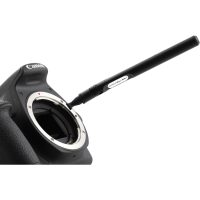

Special Considerations for Traveling to Humid or Cold Places
When traveling to humid or cold environments, additional care is needed:

Humid Environments
In humid places, moisture can accumulate inside the camera and on the lens. Use desiccant packs or a dehumidifying cabinet to keep your equipment dry. Store your camera in an airtight bag with the desiccant when not in use. Consider using a rain cover or umbrella to protect your gear from rain and moisture during shooting.
Cold Environments
Cold temperatures can affect battery life and may cause condensation when moving between warm and cold environments. Keep spare batteries warm by storing them close to your body. Allow your camera to acclimate to the new temperature gradually to prevent condensation. Use a camera bag with insulation or wrap your camera in a thermal cover when not in use.
Camera Cases with Pressure Valves
When traveling by air or changing altitudes, pressure changes can affect your camera gear. Opt for water, crush, and dustproof camera cases equipped with automatic pressure equalization valves. These valves help equalise the internal and external pressure, protecting your equipment from potential damage.
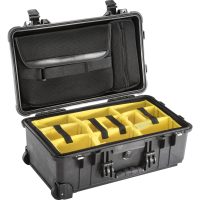
Additional Tips for Comprehensive Care
- Regular Inspections: Check your lenses regularly for signs of wear or damage.
- Moisture Control: Use silica gel packs in lens cases and consider a dehumidifying cabinet for storing equipment.
- Firmware Updates: Keep your camera updated with the latest firmware.
- Battery Maintenance: Store batteries properly and avoid exposure to extreme temperatures.
WANT TO LEARN MORE? Click HERE to become a member. We particularly recommend a pro subscription to get the most out of it.

